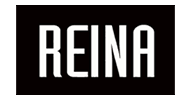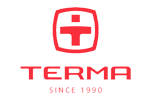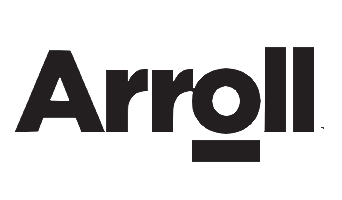JavaScript seems to be disabled in your browser. For the best experience on our site, be sure to turn on Javascript in your browser.


Best Ways To Maintain Your Chrome Radiators

Introduction
Most of today’s radiators are manufactured using mild steel and then coated with chrome paint to provide them with a shiny, protective finish. The chrome paint is what makes the rails on the radiators look more stylish, which is a critical aspect in advertisements and sales.
However, with time, rust often forms on the chrome surfaces either through condensation, leaks, or lack of maintenance. As such, it’s critical that you clean and look after your chrome radiator to maintain its stylish finish.
Cleaning and preserving chrome radiators, especially from unsightly rust, is quite simple and doesn’t require a professional or the use of expensive cleaning tools.
Below is a comprehensive step-by-step guide on how you can clean and maintain your chrome radiators.
Cleaning The Chrome Surface
Clean Water And Dish Soap
Mix clean water with dish soap to remove any dirt, marks, and grime that may have settled on the radiator’s surface. This is especially common with horizontal designer models like the Reina Neva Horizontal Designer Radiator.
This process helps to expose any rust that has formed on the radiator’s surface. Add five to ten drops of the liquid dish soap into a bucket of clean, lukewarm water. Swish through the water to produce some suds.
Wipe The Chrome Surface Using The Cleaning Solution
Dip the microfibre cloth into the cleaning solution and use it to wipe the entire radiator’s chrome surface. Ensure that you cover every inch of the metal to maximise your cleaning. Dip the cloth regularly into the cleaning solution so that it stays clean and saturated throughout the wiping process.
You can also use a soft-bristled brush to clean the harder-to-reach surfaces. Dip it into the cleaning solution, then use it to reach areas that are harder to reach.
Rinse
After washing the entire radiator surface, pour out the cleaning solution, and rinse the bucket. Then fill it with clean water that you will then use to rinse the whole chrome surface. Remember, the microfibre cloth must also be cleaned without any cleaning solution at this stage. Wipe any excess water and leftover cleaning solution on the chrome surface using a wet cloth.
Clean Stubborn Stains With Vinegar
You may also encounter stubborn stains or marks that don’t come out easily even after washing with soap and water. A mildly acidic vinegar solution is an excellent stain remover for such stains.
Vinegar is a brilliant cleaner for most surfaces and works exceptionally well on rusty chrome radiators. Its acidic nature makes it the best solution for removing rust. Rub a small amount of vinegar on the rusted chrome surface with a sponge, and you should see positive results almost immediately.
Start by mixing equal parts of water and vinegar in your bucket. Dip the microfibre cloth into the solution, and wring it out before using it to clean the tough stains and marks. When all the stains have been removed, rinse the radiator using plain water.
Dry The Chrome Surface
Don’t let the water on the radiator’s surface to air dry. This will leave water spots on the chrome surface. Use a clean microfibre cloth to dry the chrome. Check for any signs of rust even as you wipe the chrome radiator. Drying with a clean cloth or towel also restores the radiator’s shiny glow.
The Towelrads Mayfair towel radiator is one such radiator that will look as good as new, if not better, after a good clean and dry.
Removing Rust
In case there is still some rust on your chrome radiator surface, you can opt for a more aggressive rust-cleaning method.
For this, you may need:
- Aluminium foil
- A bowl of clean water
- Microfibre cloth or towel
Cut Some Squares Of The Aluminium Foil
Tear off about three strips of aluminium foil, each of about 3 to 4 inches in length. Aluminium foil is the ideal rust removal tool from chrome surfaces because it is a much softer metal. It, therefore, won’t scratch the chrome surface or make it look dull.
Fill a Bucket With Water
Basically, the water acts as a lubricant between the aluminium foil and the chrome surface. It is, however, the chemical reaction between the chrome and aluminium foil that removes the rust.
Scrub The Rust With The Aluminium Foil
Dunk the piece of aluminium foil into a bucket of water to get it wet. Then use the damp foil to rub lightly against the rusted chrome surface. It’s not necessary to use a lot of pressure while rubbing the chrome surface.
A little friction is enough to produce the aluminium oxide needed to dissolve the rust. The rust will gradually disappear as the chrome surface is restored to its shiny, smooth appearance.
If you’re working on a large rusted area, then you may need to switch to a new aluminium foil after every 10 inches of the rusted surface is cleaned.
Use A Foil Wad On Pitted Areas
Chrome surfaces are also susceptible to pitting, especially in areas that have been affected by rust. Using an aluminium foil wad is the better option and produces the best results. The foil wad will remove the rust and smooth the affected areas leaving the radiator’s chrome surface looking shiny and glossy.
Rinse And Dry The Area
Once you’re convinced that all the dust and rust have been removed from your chrome radiator, you can now rinse and dry it. Remember to use a microfibre cloth or sponge to rinse away the brown rust paste from the radiator’s surface.
After all the paste and remaining rust have been removed, dry the area using a microfibre cloth or towel.
Bottom Line
There you have it, simple ways of cleaning and maintaining your chrome radiators. Maintaining radiators isn’t as much of a hassle as most homeowners think it is. With the right cleaning tools and cleaning procedure, you can give your radiator that gleaming, glossy look that it had when you bought it. Visit Just Radiators and explore our selection of the latest chrome radiators.




































